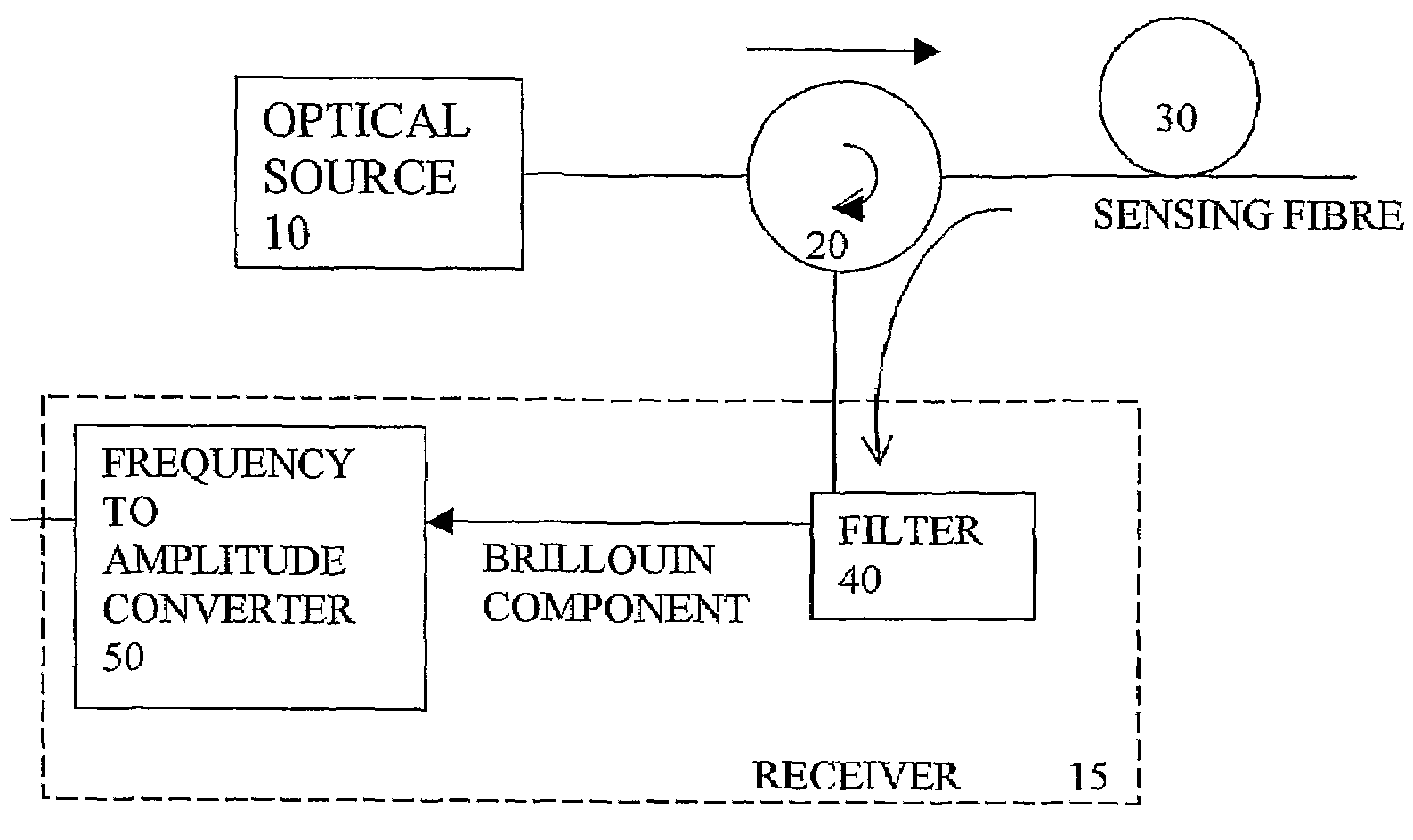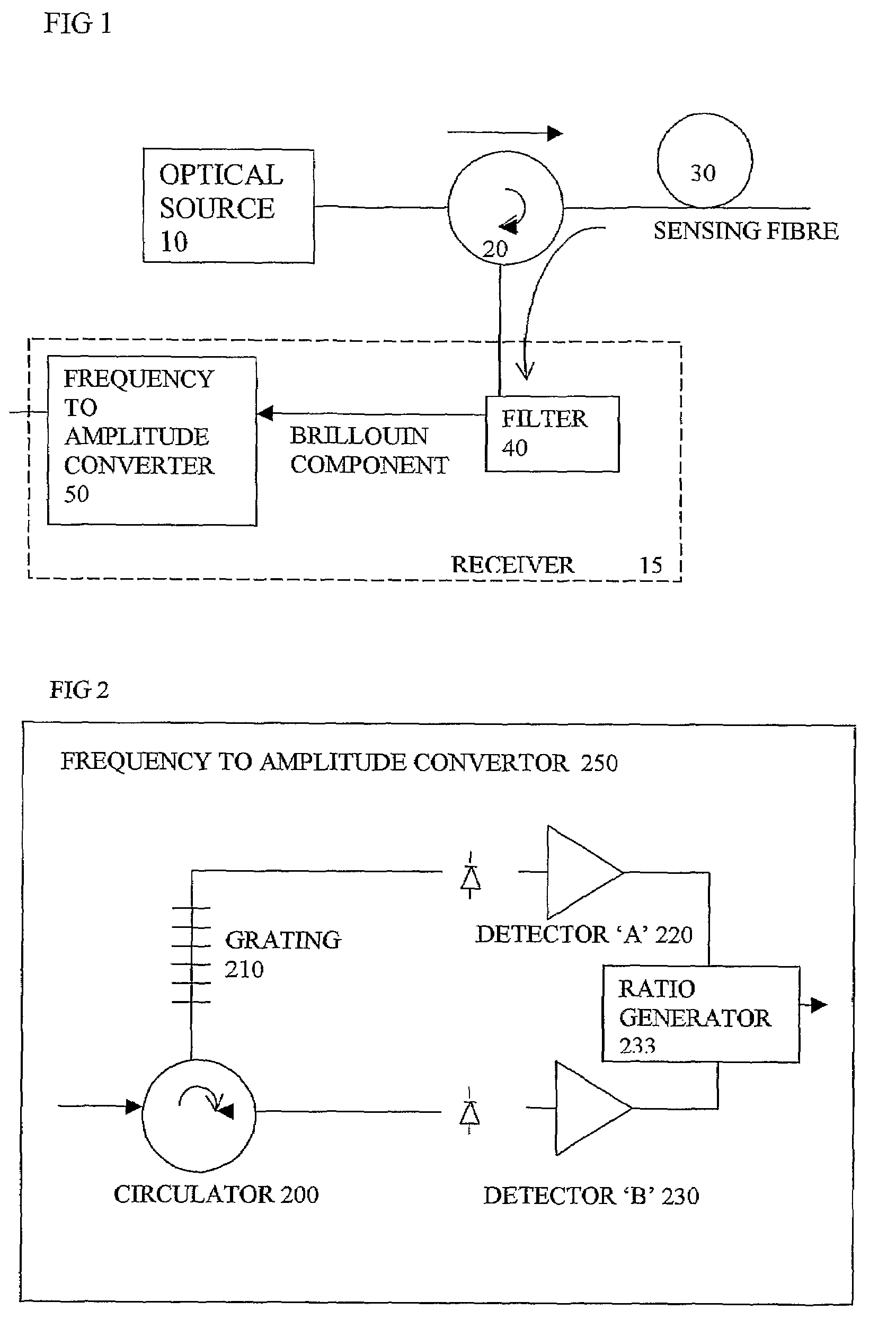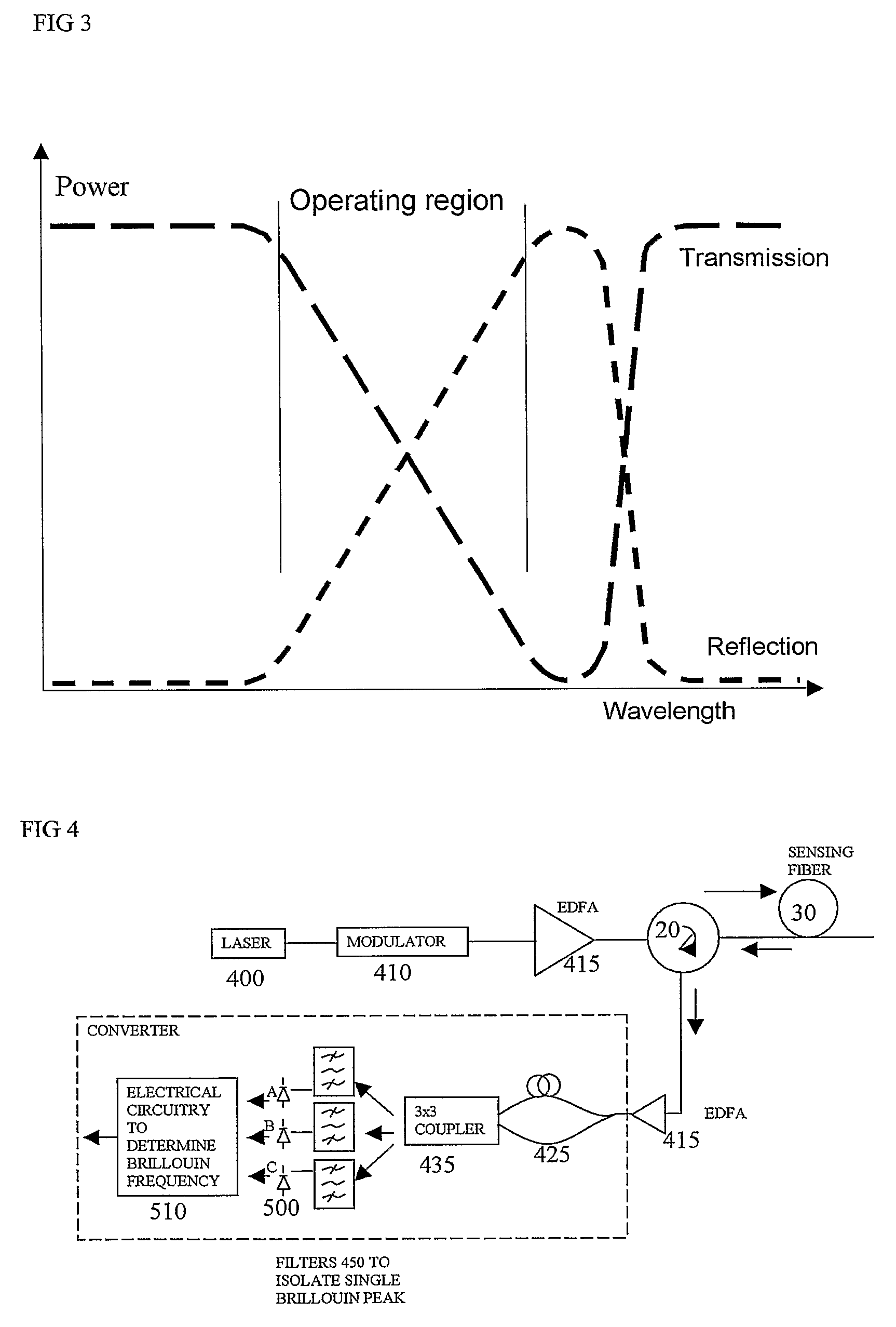Direct measurement of Brillouin frequency in distributed optical sensing systems
a technology of optical sensing and direct measurement, applied in the field of sensing systems, can solve the problems of inability to determine, slow sweep process, and limited rate, so as to reduce noise, improve accuracy, and improve accuracy
- Summary
- Abstract
- Description
- Claims
- Application Information
AI Technical Summary
Benefits of technology
Problems solved by technology
Method used
Image
Examples
Embodiment Construction
[0054]The embodiments described use an optical or electrical arrangement, with static characteristics, to directly translate the Brillouin backscatter spectrum into measures of frequency and power, from which temperature and strain can be calculated. One significant difference is dispensing with the need to acquire a detailed picture of the Brillouin spectrum. This can provide a significant increase in measurement speed since the Brillouin spectrum no longer needs to be captured through the frequency sweeping of an optical or electrical element. This technique can be coupled with the optical time domain reflectometry technique of launching a single pulse and time resolving the backscatter to provide fully distributed measures of temperature and strain in a fibre.
[0055]The use of a reference section of fibre, as has been described in earlier Sensornet U.S. Pat. No. 6,380534, is one way of allowing this technique to be self calibrating, and provide simultaneous measures of both power ...
PUM
| Property | Measurement | Unit |
|---|---|---|
| path length | aaaaa | aaaaa |
| frequency shift | aaaaa | aaaaa |
| frequency | aaaaa | aaaaa |
Abstract
Description
Claims
Application Information
 Login to View More
Login to View More - R&D
- Intellectual Property
- Life Sciences
- Materials
- Tech Scout
- Unparalleled Data Quality
- Higher Quality Content
- 60% Fewer Hallucinations
Browse by: Latest US Patents, China's latest patents, Technical Efficacy Thesaurus, Application Domain, Technology Topic, Popular Technical Reports.
© 2025 PatSnap. All rights reserved.Legal|Privacy policy|Modern Slavery Act Transparency Statement|Sitemap|About US| Contact US: help@patsnap.com



